One of my favorite plants to grow in my garden is calendula, often called pot marigolds. This blooming flower brings touches of cheerfulness and plenty of pollinators to your garden, so if you haven’t tried growing calendula yet, this is the time to start.
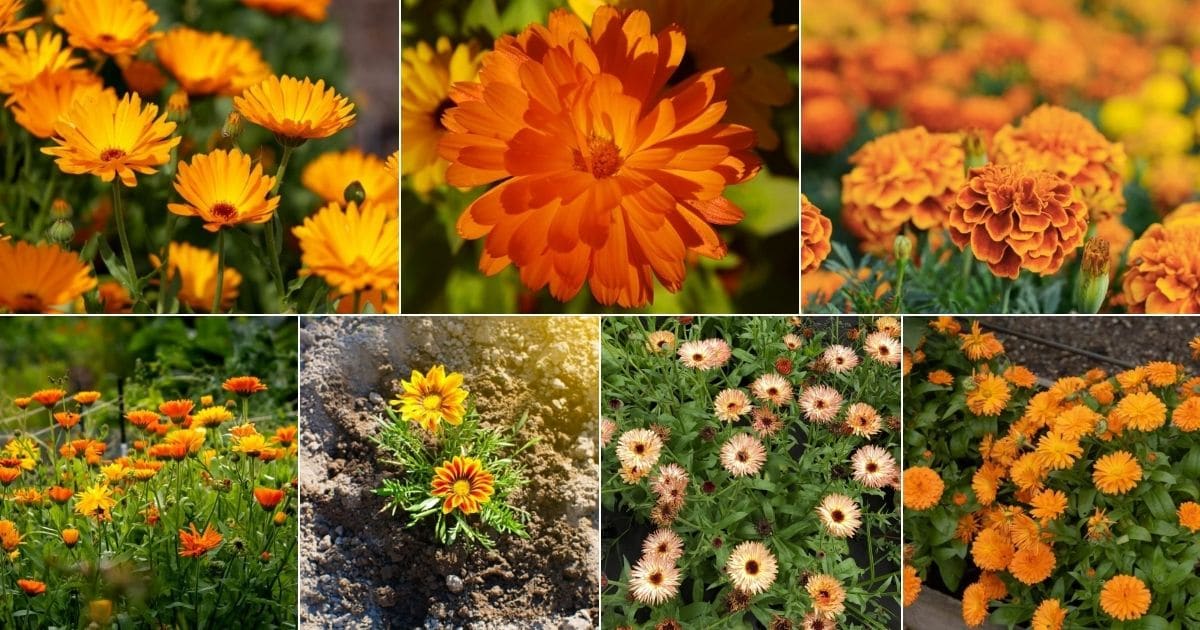
These blooming flowers are one of my favorites because so many pollinators love them. Butterflies and bees flock to the blossoms, so planting them near my vegetable plants ensures I always have plenty of pollinators to do the hard work.
I avoided growing calendula for years because I assumed I would never get them to bloom or grow as they should, but I was wrong. These plants are easier to grow than I imagined, so let me show you everything you need to know about how to grow calendula in your garden.
Jump to:
- What is Calendula?
- What is the Difference Between Calendula and Marigolds?
- Why You Should Grow Calendula
- The Best Calendula Varieties
- Calendula Growing Basics
- Is Calendula an Annual or Perennial?
- Where Does Calendula Grow Best?
- Companion Plants for Calendula
- When Can I Plant Calendula?
- When Does Calendula Bloom?
- Growing Calendula from Seed
- Planting Calendula in Your Garden
- Caring for Calendula in Your Garden
- Harvesting Calendula
- Calendula Pests and Diseases
- Try Growing Calendula This Year
What is Calendula?

Calendula (Calendula officinalis), commonly referred to as pot marigold, is a pretty, cheerful yellow to orange flower with a long history as a medicinal plant. Nowadays, most people grow this flower because of its beauty, spicy petals, and usefulness as a companion plant.
Calendula is a medium-sized plant that doesn't sprawl too far and reaches up to 15 feet tall. The plants grow best when grouped with several other plants. One thing you might notice is that these plants have fewer leaves than other flowering plants, and the blooms are short-lived.
This flower has been a staple for years in cottage gardens. Centuries ago, calendula petals created the yellow color in butter that we love so much, and the petals have a spicy flavor that works great in salads or soups.
As a companion plant, the scent attracts aphids, pulling them away from the plants you want to keep. Growing it in your garden increases the biodiversity and encourages other pollinators to stop and stay awhile.
What is the Difference Between Calendula and Marigolds?
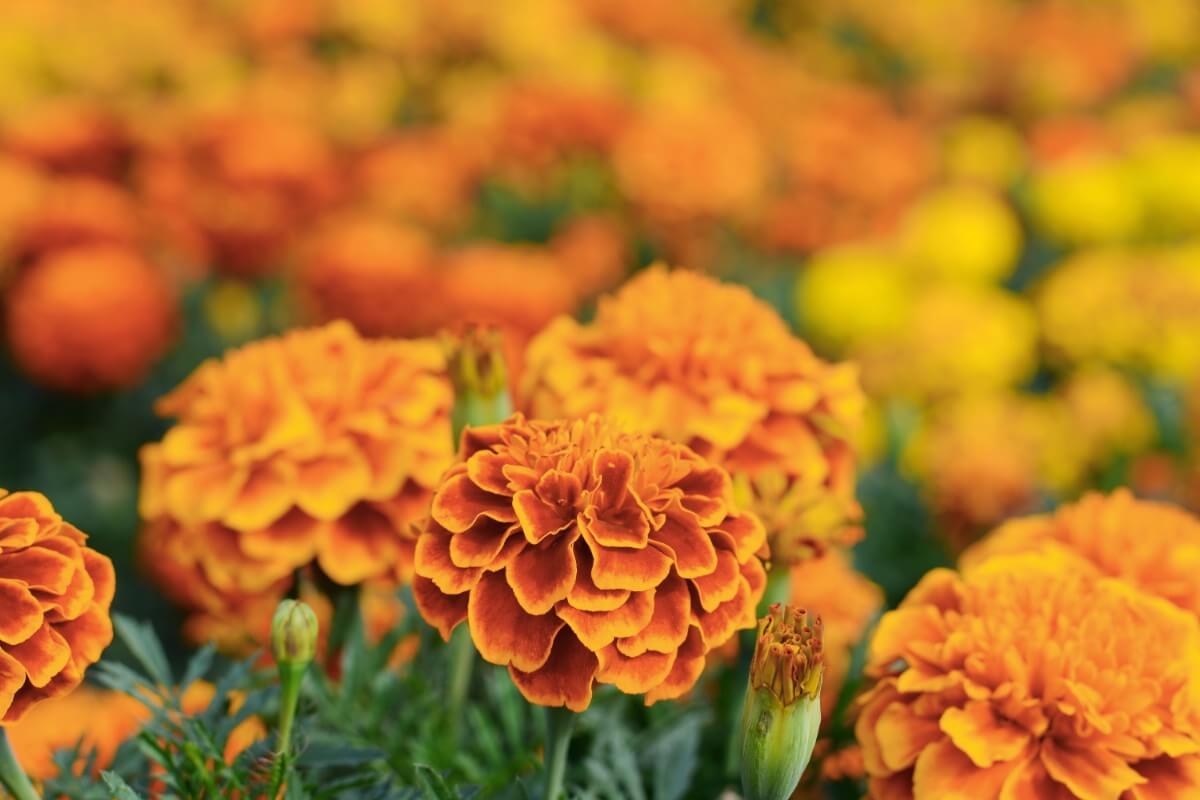
Whenever I tell people that I grow calendula in my garden, most people think I mean that I'm growing marigolds. But, despite the nickname "pot marigold," calendula and marigolds are different.
These flowers belong to the sunflower (Asteraceae) family, along with over 50 other species, but calendula belongs to the smaller genus called calendula with only 15-20 other species.
It's easy to confuse the two plants, especially with such a nickname, but here are a few key differences.
Calendula seeds are brown, larger, and curved, but marigold seeds are tiny, black seeds with thin tips.
Marigolds spread out into a wider bunch, reaching up to four feet tall. Calendula averages two feet tall and doesn’t spread as wide.
Marigolds have a strong, pungent smell when compared to the sweeter calendula aroma.
Calendula has long, straight petals with blooms shaped like a bowl. Marigolds have rectangular petals that are wavy and rounded.
Why You Should Grow Calendula
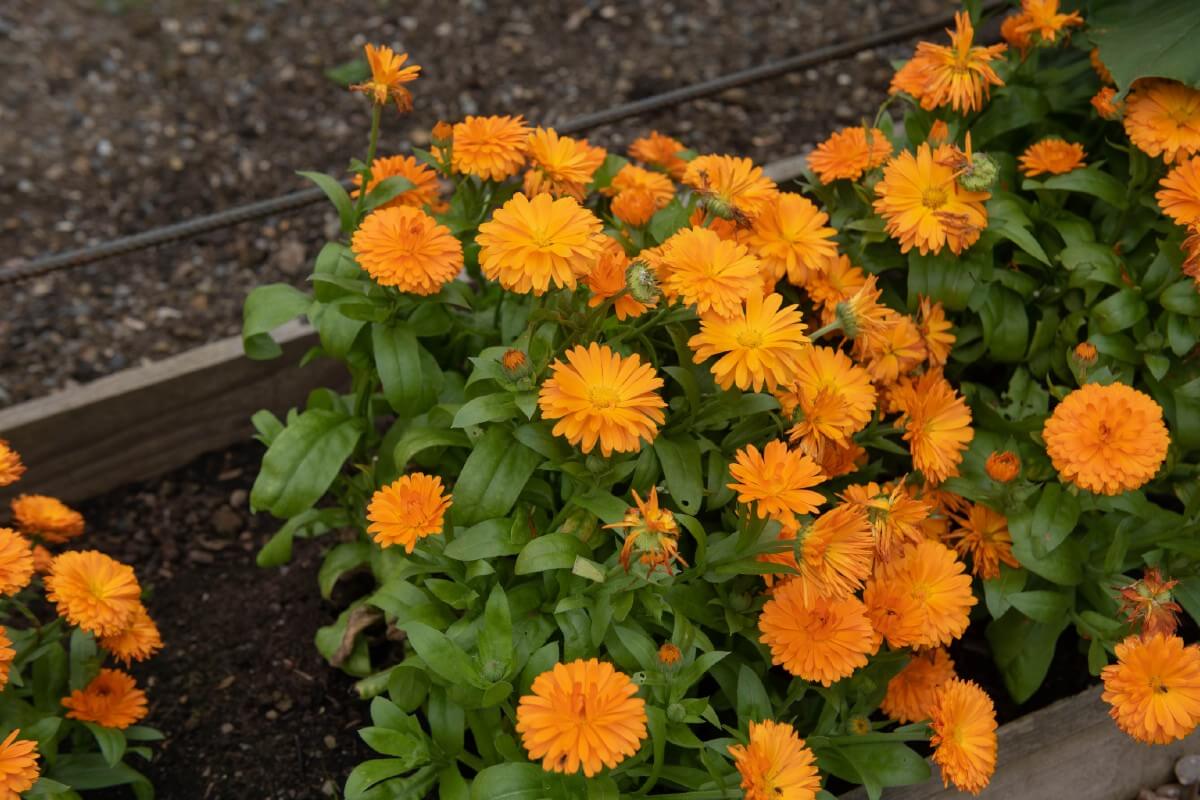
Here are a few reasons you should think about adding calendula to your garden.
1. It Protects the Soil
Calendula has thick, fibrous roots and prefers to grow together in clumps of multiple plants. Many gardeners plant it as a cover crop or a living mulch to protect the soil and avoid erosion.
It's pretty easy to use calendula as a cover crop. All you need to do is sow the seeds in the mid-summer for a fall cover crop or in the fall for a spring cover crop. The plants grow thickly together, and even if they don't produce flowers, the roots protect the soil.
2. Acts as a Trap Crop
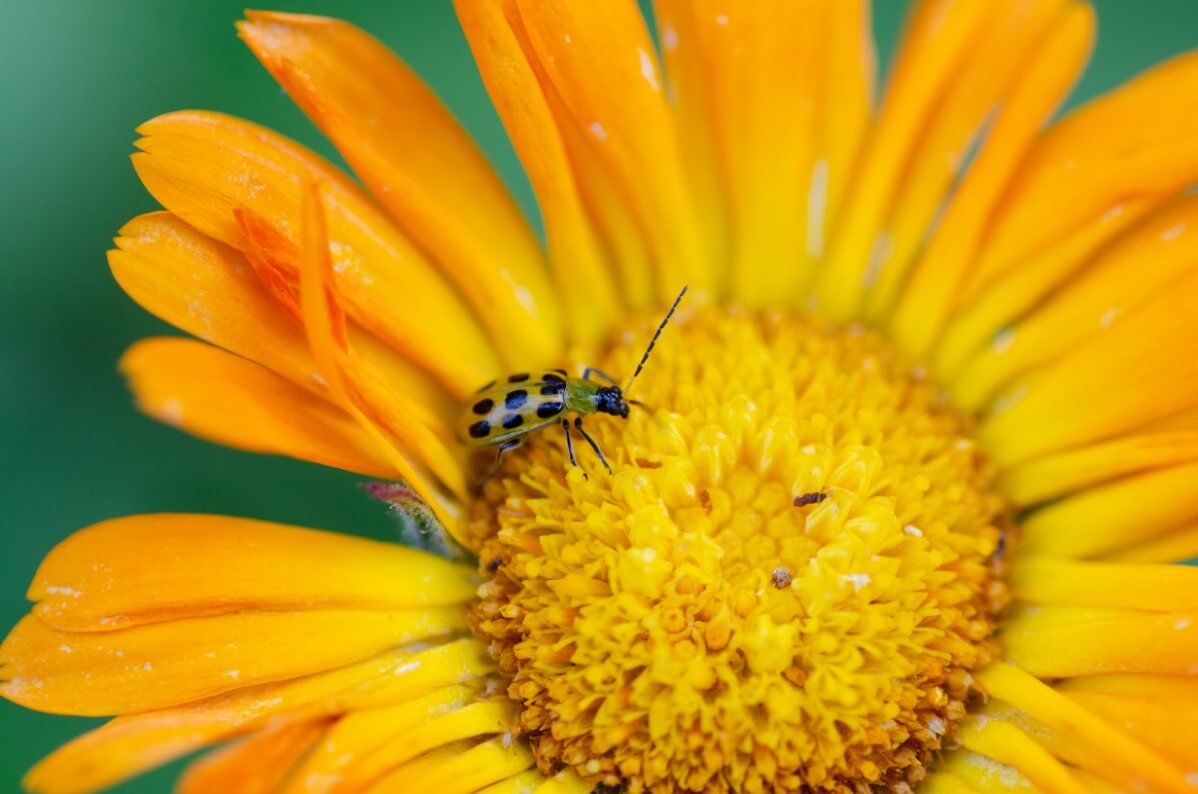
You might notice your calendula plants covered in pests, especially aphids, but that’s a good thing. It means that it’s doing its job as a trap crop.
What’s a trap crop?
This herb "traps" pests because they prefer this over other garden plants you might grow. That saves your crops like tomatoes or peppers. Using trap crops is an excellent way to take care of pests naturally.
Once the plants are full of pests, remove them from your garden and toss them - not in the compost!
3. Calendula Attracts Beneficial Insects
We know that calendula is a trap crop, but at the same time, the flowers are an essential source of nectar and pollen for pollinators like bees and butterflies. The flowers also attract other beneficial insects, such as ladybugs, hoverflies, and lacewings.
4. The Flower Brings Pops of Color
Everyone wants their garden to look beautiful, and planting pot marigold throughout your landscape or vegetable garden brings cheerful pops of color. Many veggie garden beds end up being all green and pops of orange, yellow, apricot, or even red look beautiful.
5. It’s Edible!
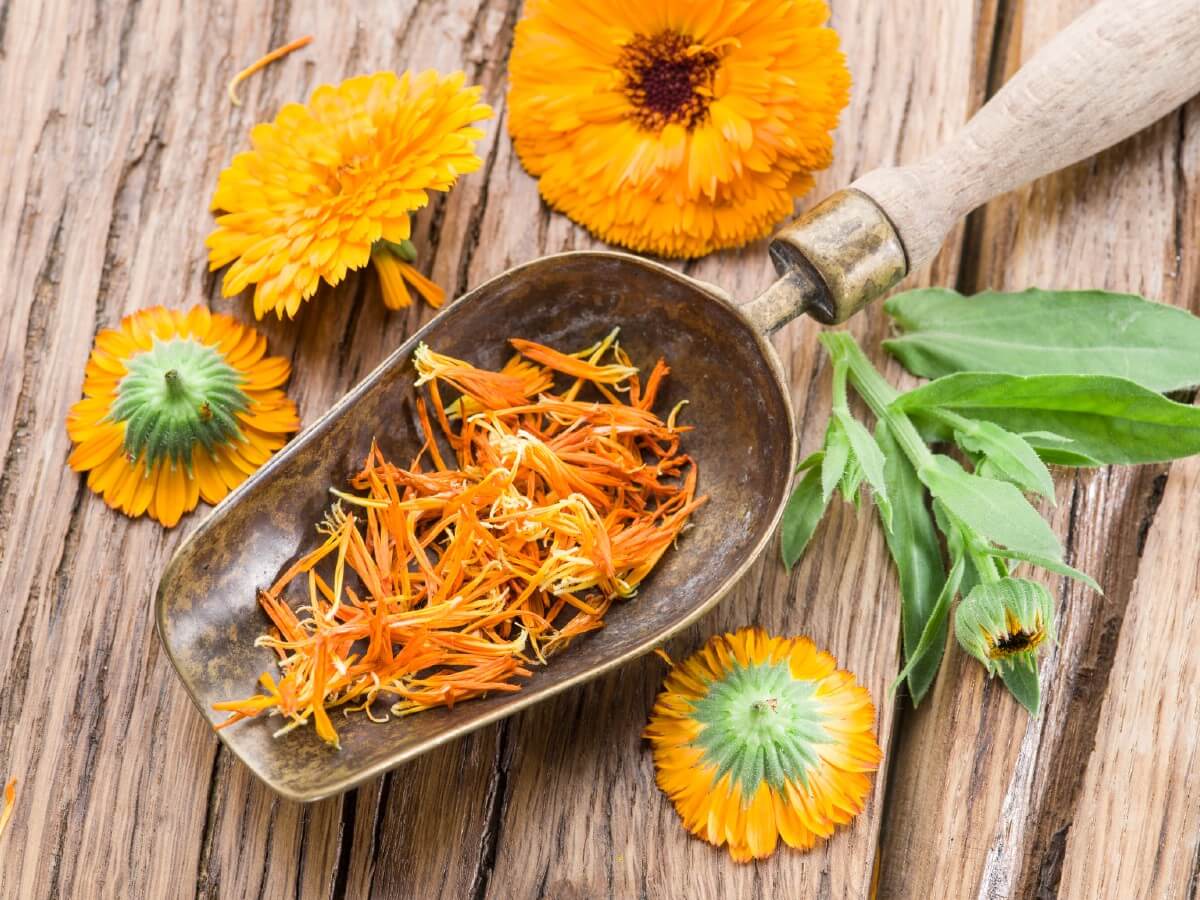
If you have never eaten edible flowers, you're missing out. Calendula flower petals brighten up recipes; you can use the petals as a natural food coloring in frosting or broth. It even acts as a substitute for saffron to make golden-colored rice!
The Best Calendula Varieties
The colors of these blooms range from orange to yellow to red, pink, and bi-color. You have plenty of options to consider when selecting the calendula varieties to grow in your garden.
The calendula family consists of around 20 different annual species and a few perennials that grow in the Mediterranean and subtropical regions. Pick a variety that grows best in your area.
Here are a few suggestions.
Bronzed Beauty
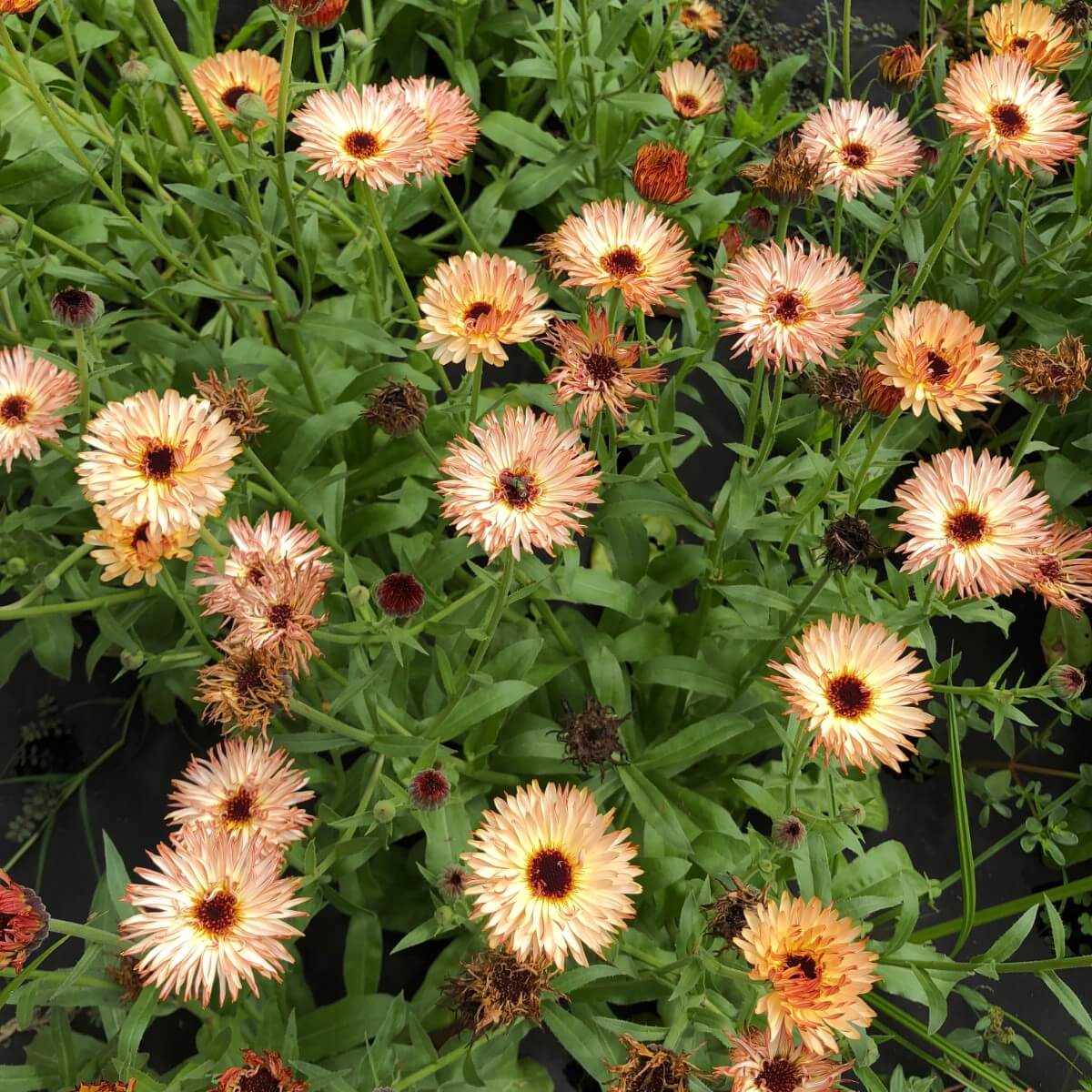
This variety has copper-peach and cream-colored flowers with tall stems; they truly stand out in your garden.
Dwarf Gem
This calendula variety is a compact plant that has double petals of orange, yellow, and apricot. If you want to grow these flowers in containers, try Dwarf Gem!
Fruit Twist
Fruit Twist produces single, double, and semi-double flowers in various shades of orange and yellow, creating quite a show in your garden.
Greenheart Orange

Greenheart Orange flowers have orange petals that are surrounded by lime-green centers. It's a striking, unusual-looking bloom!
Pink Surprise
Here is one of my favorites - Pink Surprise. These flowers have ruffled gold and yellow petals with pink edges and dark apricot centers.
Porcupine
If you’re looking for a unique calendula variety, try porcupine. These flowers have spiky, bright orange, quilled petals that stand out in the garden.
Tangerine Cream
If you grow Tangerine Cream, the blooms are bi-colored, a mixture of cream and bright orange.
Triangle Flashback
These blooms are gorgeous with a soft, apricot-pink color.
Touch of Red
As the name suggests, the 'Touch of Red' calendula has dark red touches underneath and on each petal's edges.
Calendula Growing Basics
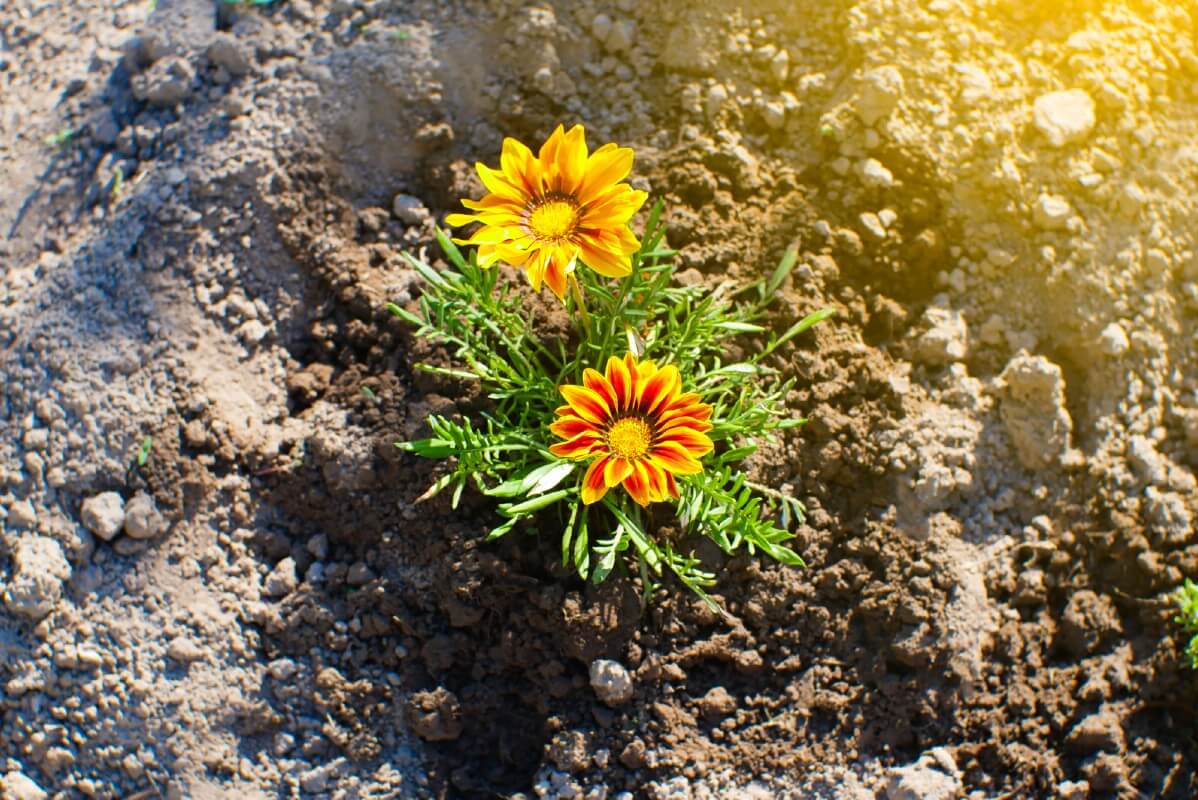
Before we start learning about growing calendula, here are the basic requirements you need to know.
Botanical Name: Calendula Officinalis
USDA Zones: Zones 3 to 10
Sun Exposure: Full sunlight or part shade
Soil Needs: Rich, well-draining, organic soil
pH Range: 5.5 to 7.0
Spacing: 6-8 inches
Bloom Time: May to Early Fall
Is Calendula an Annual or Perennial?
Calendula is a short-lived annual flowering herb that only grows until the first frost appears in your area. However, the plant easily reseeds itself, so make sure you plant it in an area that you don’t mind regrowing year after year.
Where Does Calendula Grow Best?
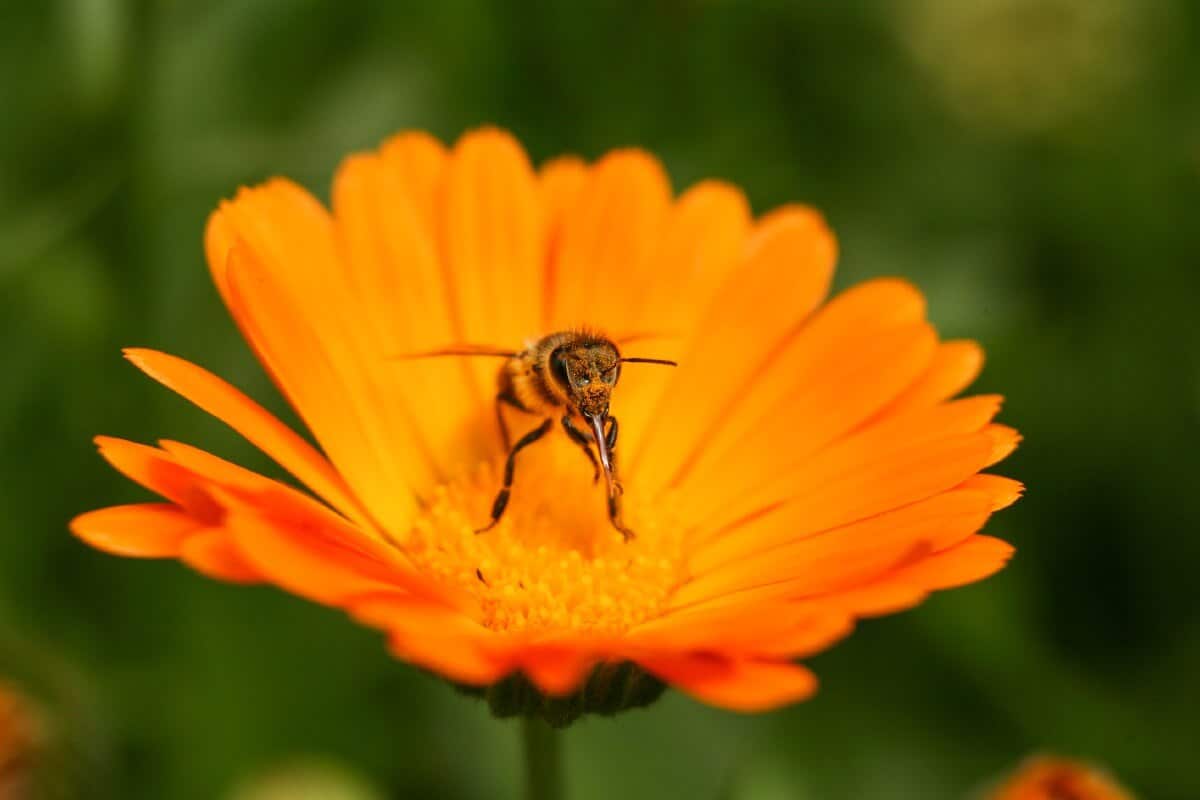
Calendula grows in most USDA zones. The plant grows as an annual in zones three to eight. Gardeners in zones nine and ten can grow calendula as a perennial plant.
Calendula grows best when planted somewhere with full sunlight or partial shade. This plant doesn't love intense heat in the middle of the summer; it prefers cooler temperatures. So, if your summer tends to be hot, make sure you plant it somewhere with some shade in the afternoon.
Companion Plants for Calendula
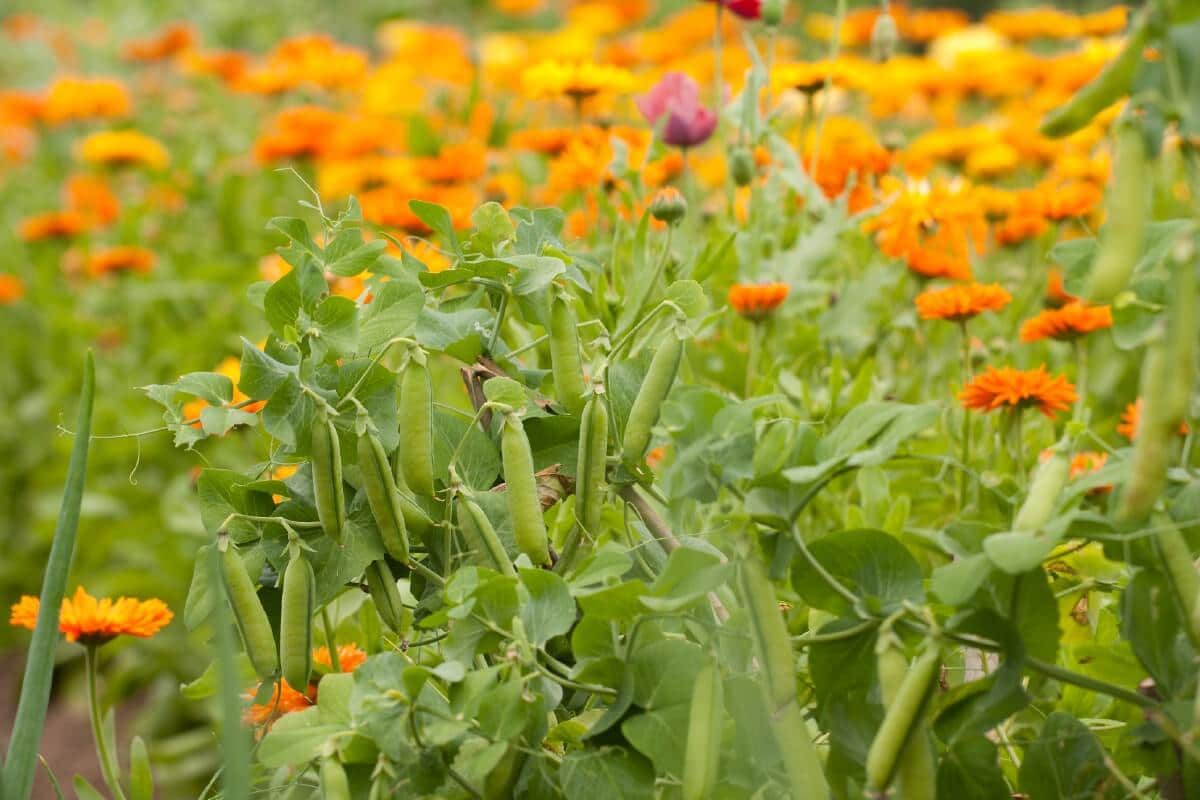
When you’re picking where to grow these flowers, consider that they are excellent companion plants. Plant them near these veggies:
- Tomatoes
- Cucumbers
- Peas
- Carrots
- Asparagus
- Lettuce
- Spinach
When Can I Plant Calendula?
Calendula prefers to grow in cool weather, but it isn’t frost-hardy. In most places, you should plant this flowering herb outside after the last spring frost in your region. For most gardeners, that means the seeds or seedlings need to be placed outside between March and May.
However, it’s different if you live somewhere perpetually hot.
If you live somewhere that is excessively hot in the summer, such as Arizona, plant calendula in the cooler months in late fall and spring.
When Does Calendula Bloom?

You have to wait for eight weeks after you plant calendula for the plants to start blooming. If you plant by seeds, the wait is longer than planting seedlings that you started inside. On average, calendula starts to bloom from late May to early June. The plant will continue to bloom as long as you cut and remove the flowers until the first frost of the year.
Growing Calendula from Seed
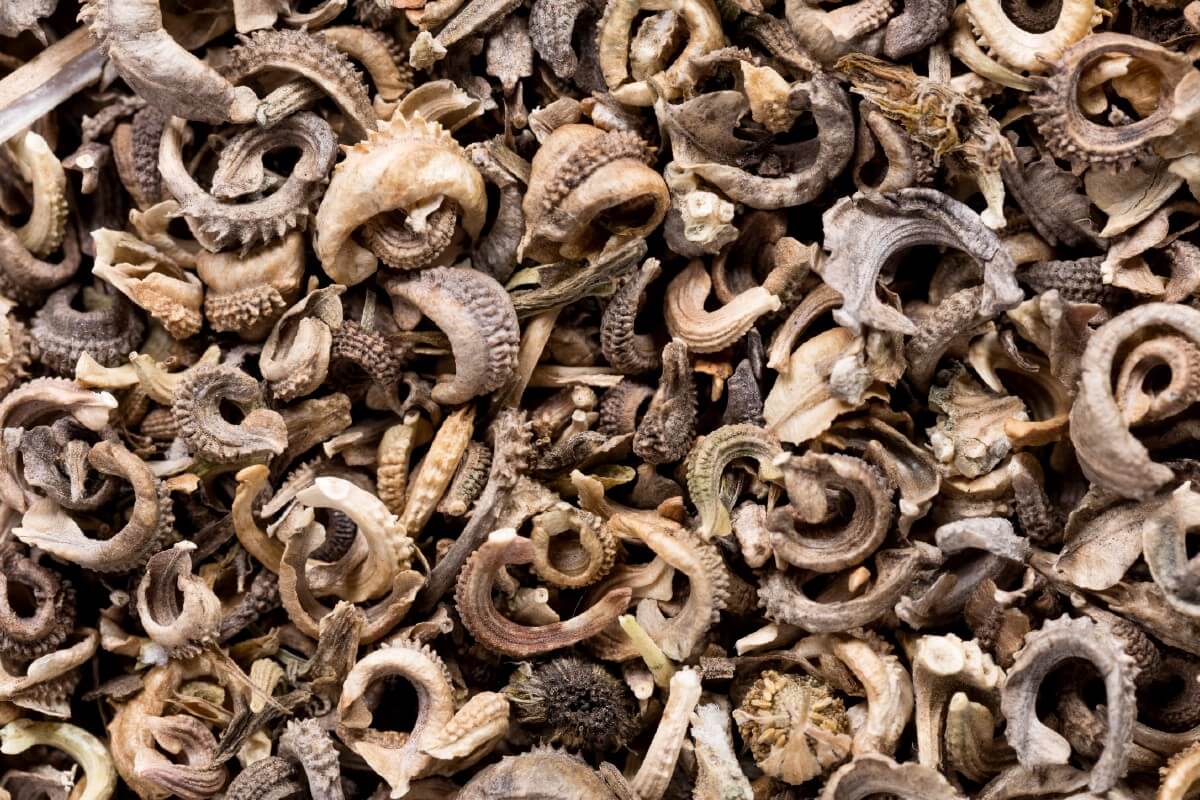
In most cases, gardeners grow calendula from seed; it's also not common to find calendula seedlings at local nurseries. You may directly sow the seeds into the garden after the danger of frost passes.
Calendula seeds germinate within one to two weeks when kept moist, and the plants should start to bloom eight to ten weeks after planting the seeds.
I often prefer to start my seeds indoors three to four weeks before the final frost date in my region. I start earlier because the plants will bloom faster in my garden.
If you want to start calendula inside, here is what you need to do.
Fill seedling pots with a seed-starting mix, and plant two seeds in each pot, planting the seeds ½ inch deep.
Keep the pots moist while you keep them in a warm location until the seeds germinate.
Once germinated, move the sprouts under grow lights, continuing to keep the soil moist until it's time to plant them outside.
Planting Calendula in Your Garden
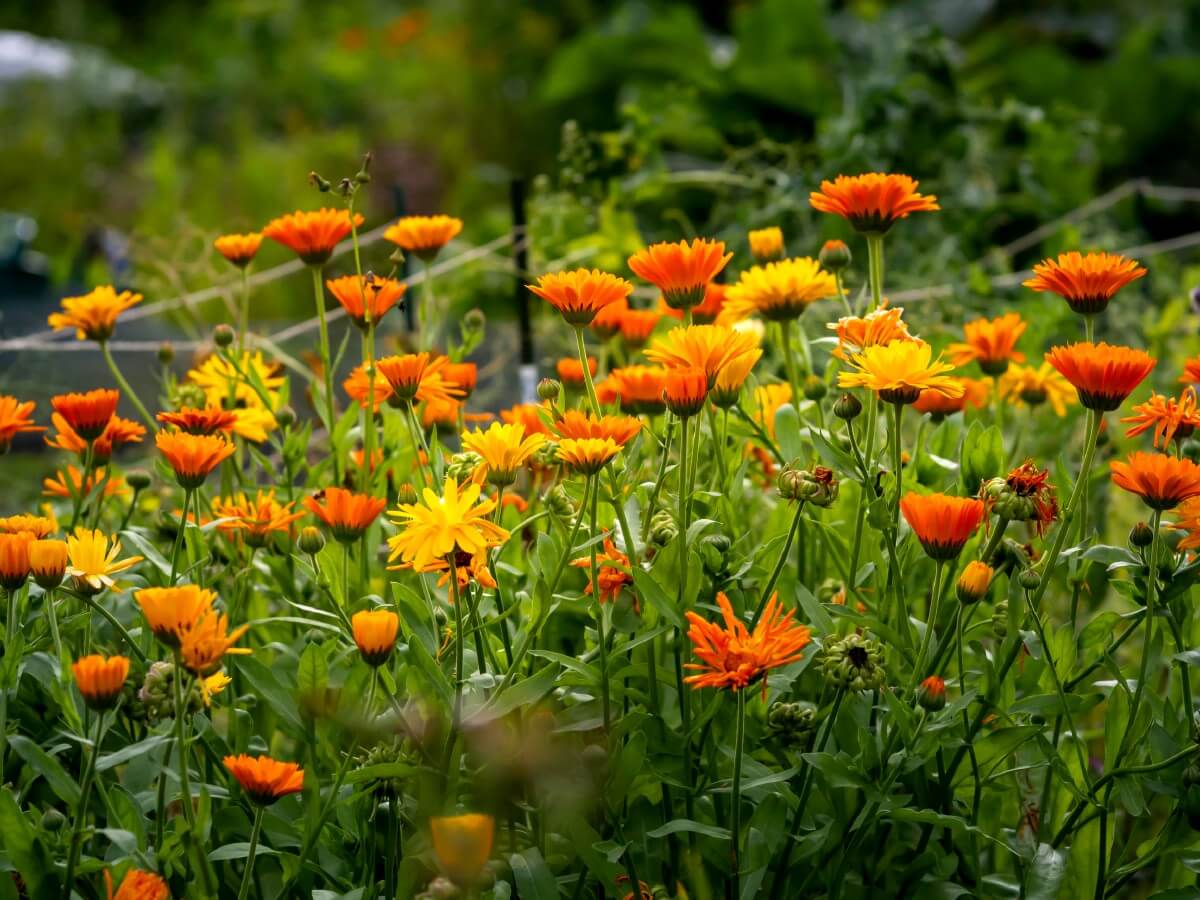
Whether you plant the seeds directly outside or start the seeds indoors, the process of growing the seedlings outdoors is the same. You'll want to follow these same steps; don't worry, it's quite similar to planting other flowering plants.
1. Amend Your Soil
It's a good idea to amend your soil before you plant the calendula seedlings into your garden. While these flowers tolerate a range of soil, the optimal conditions are rich, organic soil. Work a few inches of compost into your garden soil; that is sufficient for most flowers and
herbs.
Another reason that adding compost is a good idea is that it will encourage well-draining soil. The last thing these flowers want is poor draining, soggy soil.
Before planting, it's also a good idea to tell the soil pH range in your garden. For example, calendula grows best between 5.5 to 7.0; adjust as needed for optimal growing conditions.
2. Space Your Seedlings
Calendula typically doesn’t spread out too wide, so the best spacing for these plants is six to eight inches apart. That gives the plants ample room to grow. It works great as a border or edging flower.
I suggest using a ruler or measuring and marking each spot where you will place the seeds or seedlings. Keep rows of calendula 12 inches apart to allow for ample sprawling.
3. Plant Your Calendula Seeds or Seedlings
You should plant seeds ¼ inch deep; planting too deeply will hinder germination because the seeds need a bit of light to sprout well. Always plant two seeds in each hole; if both sprout, clip one with garden scissors at the base of the plant.
When planting seedlings, dig a hole that is slightly wider and deeper than the rootball. Gently loosen any roots at the bottom and plant the seedling, filling the hole back in with the soil and patting the dirt into place.
After you plant the seedlings or seeds, make sure to water the soil deeply to help the roots establish or start the germination process.
4. Mulch Around Your Plant
After planting your calendula seedlings, it’s best to mulch around your plants. If you’re growing calendula from seed, wait until the sprouts are four to five inches tall before mulching.
Mulching reduces weeds and keeps the soil moist. We know that these plants grow the best when the soil is kept consistently moist but never soggy.
Caring for Calendula in Your Garden
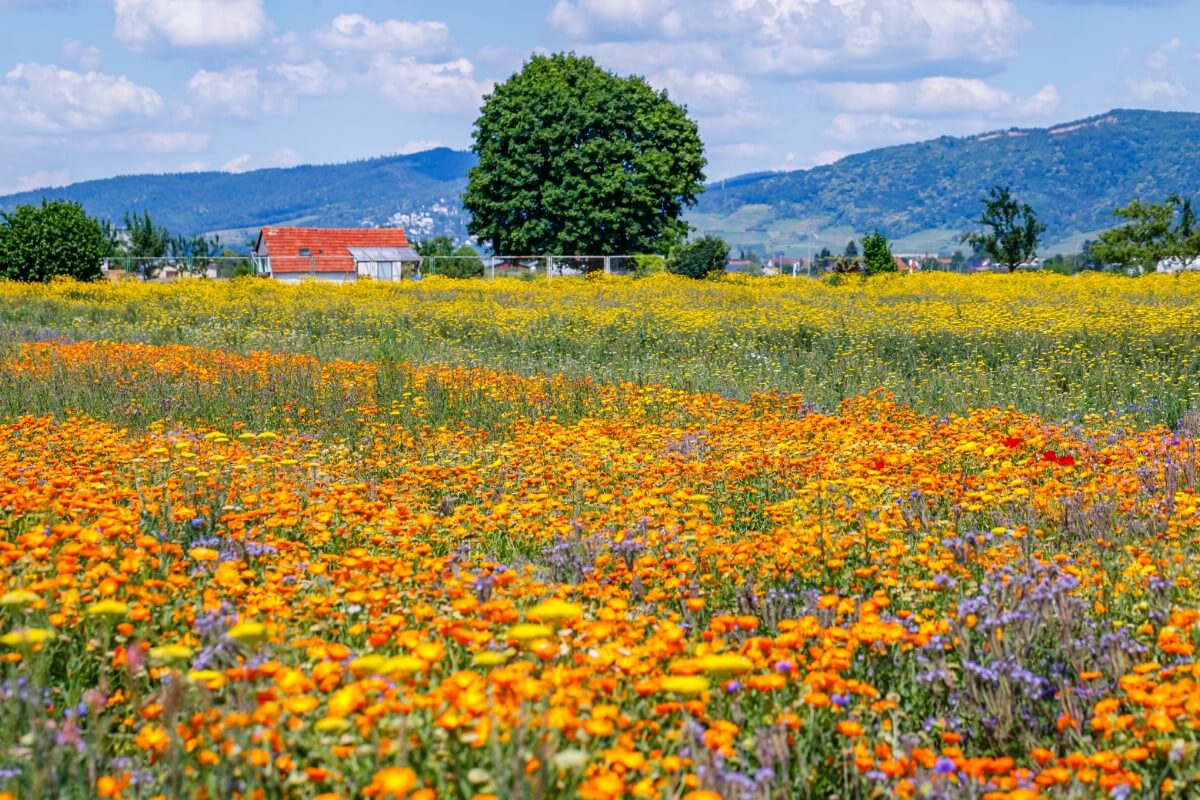
One of the reasons I love growing calendula is that it's a relatively low-maintenance plant. It doesn't require any special care. As long as you water it and frequently harvest the flowers, the plants will grow well.
Here is what you need to know about caring for calendula plants.
1. Watering Needs
Pot marigolds want to be watered regularly until the plants are well-established in your garden. Dry soil causes the plants to stress out. If the soil dries out after flowering, the blooms will droop and go to seed.
Make sure you keep a regular watering schedule for your calendula plants. These plants need an average of one to one-and-a-half inches of water each week.
2. Does Calendula Need to be Deadheaded?
Calendula blooms are short-lived compared with other flowers, so while the plants don't require deadheading, it's the best way to ensure your plants continue to produce more blooms.
Rather than waiting for the flowers to die, cut them back, dry them, or use them in recipes. The more often you remove the blooms, the more flowers your plants will grow.
3. Pruning Calendula
If you plant pot marigold in the spring, it typically looks a bit shaggy and tired by mid-summer. One way to rejuvenate your plant is to prune it.
The best time to do this is when you're deadheading or cutting flowers. Cut back half of its growth, and you'll quickly notice healthier, more robust growth as it comes back.
4. Fertilizing Calendula
Fertilizing calendula is optional. Most herbs and flowers require little fertilization, and you have to be sure you aren’t adding too much nitrogen. Excess nitrogen leads to too much foliage growth and few flowers.
If you fertilize this plant, use a balanced, water-soluble fertilizer. Container plants require more feedings than that grown in-ground because the nutrients run out much easier.
Harvesting Calendula
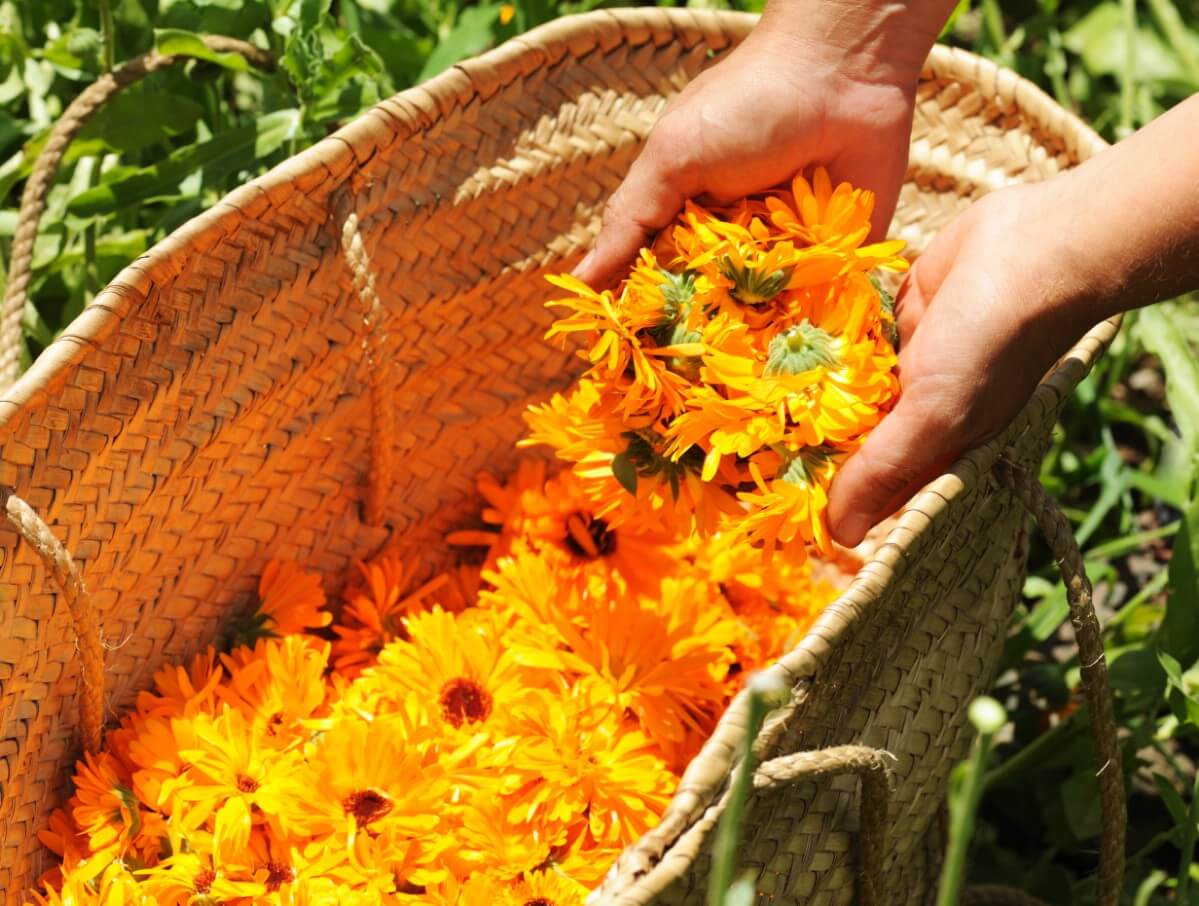
The best time to collect calendula flowers is in the late morning after the dew dries. Wait until the flowers are fully opened before removing them from the plant. The flowers open fast, so check each morning.
People love drying calendula blooms; you can use them when making lotions or soaps. All you have to do is spread the cut flower heads on a screen in a dry, shady spot, remembering to turn them over from time to time until the blooms feel papery dry.
Calendula Pests and Diseases
Calendula plants typically have no serious pest or disease problems, giving you another fantastic reason to grow these plants. Keeping the ground around the plants clear of debris helps to reduce any pests, like slugs that might find these flowering herbs.
Here are a few things to keep an eye out for when growing calendula.
- Powdery Mildew
- Slugs and Snails
- Aphids
- Whiteflies
Try Growing Calendula This Year
If you’ve never added pot marigold to your garden, you need to grow it this year. Growing calendula is far easier than you imagine, and it will bring all sorts of pollinating insects to your garden. You’ll wonder why you waited so long to add these plants to your garden beds.

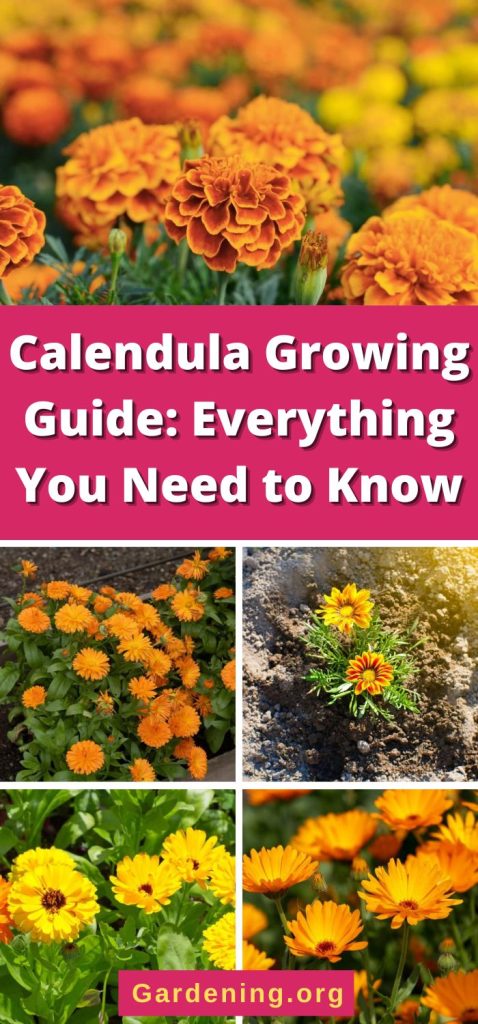
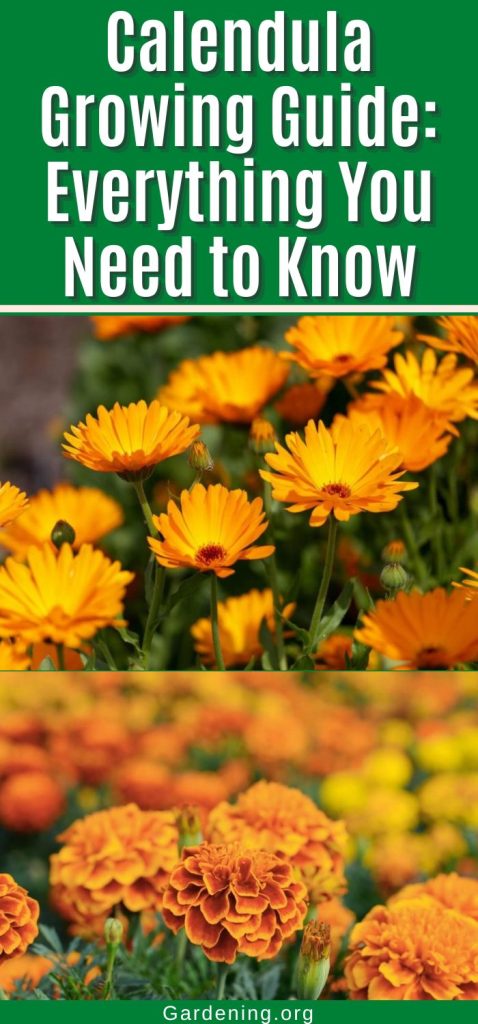


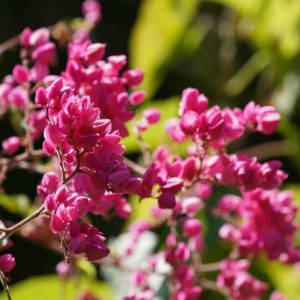
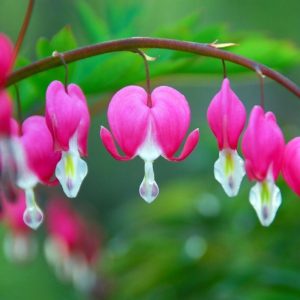
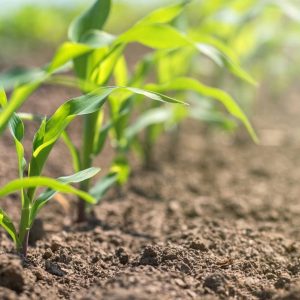
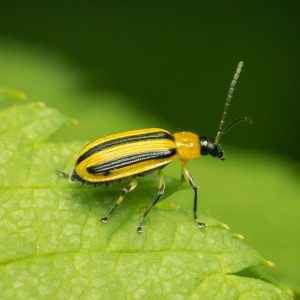
Leave a Reply